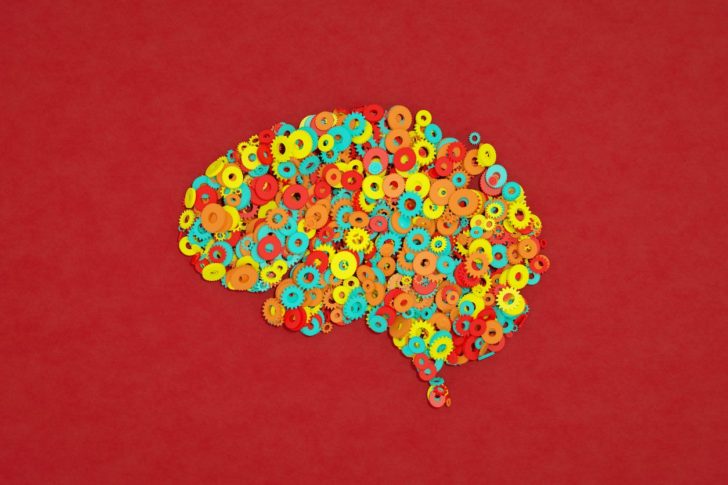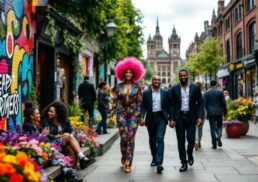Welcome to our exploration of neurodiversity, a fresh perspective that celebrates the unique ways our brains function. In this insightful blog post, we’ll delve into the world of neurological differences, uncovering the strengths and talents of individuals who think differently. Let’s embark on this journey together, deepening our understanding and appreciation for the beautiful tapestry of human diversity.
Table of Contents
Key Takeaways
The neurodiversity movement strives to promote acceptance and equality for those with neurological differences.
Australian sociologist Judy Singer’s pioneering contribution has helped shift societal perceptions and foster a more inclusive environment.
Creating supportive educational, workplace, and community environments is essential in order to empower individuals with neurodiversity.
Embracing Neurodiversity: The Movement and Its Goals

The neurodiversity movement aims to advance equality and acceptance for individuals with neurological differences, emphasizing their strengths and distinctive capabilities, such as various brain differences. Neurodiversity should not be mistaken as synonymous with disability. While neurodivergent characteristics, like those found in the autistic community, may require accommodations in the workplace or academic settings, they are not inherently disabling.
Critics argue that the neurodiversity paradigm may minimize the difficulties associated with certain disabilities, such as developmental coordination disorder. However, widespread acceptance of neurodiversity, which acknowledges the natural variations in the human brain, could lead to substantial alterations in education and workplace norms. This would ultimately benefit neurodiverse individuals and create a more inclusive society.
Australian Sociologist Judy Singer’s Contribution
The term “neurodiversity” was first introduced in the 1990s by Judy Singer, an Australian sociologist. Her objective was to foster equality and inclusion among “neurological minorities”. She focused her pioneering work on diminishing stigma and enhancing acceptance for individuals with autism, including those on the spectrum. The advent of the term “neurodiversity” has had a significant impact on the movement, helping to shift societal perceptions and foster a more inclusive environment for neurodiverse individuals.
Our understanding of neurodiversity is largely influenced by language. Singer’s work highlights the distinction between person-first language, referring to someone as “a person with autism,” and identity-first language, referring to them as “an autistic person”. This subtle difference in language underscores the importance of recognizing and embracing neurodiversity as an integral part of an individual’s identity. The way we describe people, especially those with neurodiverse conditions, can greatly impact their experiences and self-perception.
Social Justice and Neurodiversity
The neurodiversity movement, as a part of the social justice movement, is deeply rooted in social justice, striving to acknowledge and accept neurological differences, such as autism, ADHD, and other neurodevelopmental conditions, as a normal part of human diversity. The social model of disability posits that disabilities are largely caused by societal barriers, rather than being solely attributed to intrinsic deficits. This perspective emphasizes the importance of supporting autistic workers and creating inclusive environments in both educational and workplace settings.
Recognizing and advocating for neurodiverse individuals in society is important. Their unique strengths and viewpoints can positively contribute to society, despite their brains working differently. Social media platforms play a vital role in constructing a supportive community, bridging neurodiverse individuals with neurodevelopmental differences, and sharing stories, experiences, resources, and advice. These platforms also serve as powerful tools for raising awareness and advocating for neurodiversity.
Neurological Differences: Common Conditions and Their Strengths
Neurological differences encompass a wide range of conditions, including autism, ADHD, learning disabilities, and more. Despite the challenges these conditions may pose, we should not overlook the unique strengths and abilities that individuals with neurological differences possess. By focusing on the strengths associated with neurological differences, we can foster a more inclusive and accepting society that highlights the talents and capabilities of neurodiverse individuals.
Distinct conditions are linked to varying strengths. For example, individuals with autism might excel in pattern recognition, whereas those with ADHD could demonstrate proficiency in multitasking. Emphasizing these strengths helps to describe neurodiverse individuals in a positive light, shifting the focus from deficits to the unique contributions they bring to society.
Autism Spectrum Disorder
Autism spectrum disorder (ASD) is a complex brain disorder that affects the way an individual behaves, communicates, and learns. The intensity of symptoms can range between mild to severe in an individual. Autistic people, who are part of the autistic spectrum, possess a range of strengths, such as:
Good verbal skills
Visual thinking
Creative problem-solving
Detail orientation
Focus
Reliability
Punctuality
Honesty
Loyalty
Fairness
Non-judgmental listening
Despite the challenges associated with ASD, individuals with autism can thrive when provided with the appropriate support and accommodations. Medical evaluation and treatment, such as obtaining a formal diagnosis, can provide access to social and medical services when needed, ensuring the well-being and success of autistic individuals.
Learn more, visit What Is Autism Spectrum Disorder (ASD)?
Attention Deficit Hyperactivity Disorder
Attention Deficit Hyperactivity Disorder (ADHD) is a neurodevelopmental disorder characterized by symptoms such as inattention, hyperactivity, and impulsivity. Individuals with ADHD often display a high degree of enthusiasm, motivation, and imaginative thinking, with their impulsivity sometimes viewed as an asset.
However, ADHD can also present challenges, such as difficulty with organization, time management, task completion, social interactions, and self-regulation. By implementing strategies like structure and support, positive reinforcement, and accommodations in educational and professional settings, we can help ensure the success of individuals with ADHD.
Learning Disabilities
Learning disabilities are neurological disorders that can affect a person’s ability to understand or use spoken or written language, perform mathematical calculations, or acquire and retain information. Examples of such conditions include dyslexia and dysgraphia, which are types of developmental disorders. Individuals with learning disabilities often demonstrate creativity, strategic and intuitive thinking, practical ability, problem-solving, and a love of words.
Recognizing and supporting individuals with learning disabilities is essential for their success in both educational and professional settings. By providing accommodations and understanding the unique challenges faced by these individuals, we can foster a more inclusive environment that celebrates neurodiversity.
Supporting Neurodiverse Students and Workers

To support neurodiverse students and workers, it’s essential to create inclusive environments in educational and workplace settings. By understanding and accommodating the unique needs of neurodiverse individuals, we can help them reach their full potential and make meaningful contributions to society.
Strategies for supporting neurodiverse students and workers include providing accommodations, cultivating a supportive atmosphere, and offering mentorship and career guidance. Inclusive education and workplace inclusivity are key components of fostering neurodiversity. By implementing tailored accommodations and support services, treating all individuals with respect, and providing equal opportunities, we can create an environment where neurodiverse individuals can thrive.
Inclusive Education
Inclusive education is a pedagogical approach that seeks to create a learning environment conducive to the growth and success of all students, regardless of their differences. By accommodating and supporting neurodiverse learners in the classroom, we can help ensure their success and foster a more inclusive educational environment.
Strategies for accommodating and supporting neurodiverse learners in the classroom include providing individualized instruction, utilizing visual aids, and fostering a supportive learning environment. By implementing these strategies, we can create a more inclusive and accessible learning experience for all students.
Workplace Inclusivity
Fostering neurodiversity in the workplace is essential for creating an inclusive environment where all employees, regardless of their differences, can contribute and be respected. By providing necessary support and accommodations for neurodiverse employees, we can help them succeed and make a positive impact in the workplace.
Resources and accommodations tailored to the specific needs of neurodiverse employees are crucial for their success. By implementing strategies such as flexible scheduling, assistive technology, and mentorship programs, we can promote workplace inclusivity and support neurodiverse individuals in reaching their full potential.
Neurodiversity as Identity: Self-Identification and Community Building
The shift from clinical diagnosis to self-identified identity has helped to empower neurodiverse individuals, allowing them to:
Define and embrace their own neurodivergent identities
Provide a sense of autonomy and authority over their own experiences, struggles, and abilities
Foster a sense of community and solidarity among neurodiverse individuals.
Building a supportive community is essential for promoting neurodiversity and reducing stigma and discrimination. By connecting neurodiverse individuals with resources, support, and others who share similar experiences, we can create a safe and encouraging environment that fosters acceptance and inclusion.
The Role of Social Media Platforms
Social media has played a significant role in the neurodiversity movement by enabling neurodiverse individuals to:
Establish connections
Exchange experiences
Share their stories
Advocate for neurodiversity
Platforms such as Facebook, Twitter, and Instagram have provided a space for individuals to foster a supportive community and raise awareness about how the brain works differently in those with neurological differences.
Social media platforms have also helped to bridge the gap between neurodiverse individuals with different neurodevelopmental differences, providing a supportive network and a wealth of resources for those in need of assistance. By leveraging the power of social media, we can continue to build a supportive community that promotes neurodiversity and empowers neurodiverse individuals.
Building a Supportive Community
Creating a safe and supportive environment for neurodiverse individuals is crucial for promoting acceptance and understanding. By fostering a sense of community and providing resources and assistance, we can help neurodiverse individuals feel valued and included in society.
Community support plays a vital role in reducing stigma and discrimination, as well as providing resources and assistance for individuals to access the services and accommodations they require. By working together to create a supportive community, we can promote acceptance and inclusion for neurodiverse individuals and help them reach their full potential.
Navigating Diagnosis and Treatment: Balancing Neurodiversity and Medical Care
Individuals who identify as neurodiverse require proper evaluation and support to ensure they access the necessary resources and accommodations to succeed. By respecting individual differences and focusing on strengths rather than deficits, we can help create a more inclusive society that values the unique contributions of neurodiverse individuals.
Neurodiverse individuals need:
Accurate diagnosis
Treatment to access necessary resources and support
Balancing the need for proper evaluation and support with respect for individual differences
By doing so, we can create a more inclusive and supportive environment for neurodiverse individuals.
Seeking Evaluation and Support
Encouraging parents and individuals to seek professional help when needed is crucial for addressing the unique needs of neurodiverse individuals. Obtaining evaluation and support can lead to:
A better understanding of personal challenges and strengths
Customized medical care
Access to relevant interventions
Self-empowerment
For the well-being and success of neurodiverse individuals, it is important to:
Seek evaluation and support from a qualified professional like a psychologist, psychiatrist, or other mental health professional
Provide necessary resources and accommodations
Create an environment that is more inclusive and promotes neurodiversity.
Respecting Individual Differences
Recognizing neurodiverse individuals as having differences rather than deficits is essential for fostering acceptance and understanding. By focusing on the unique capabilities and talents of neurodiverse individuals, we can promote a more inclusive society that values their contributions.
Proper diagnosis and treatment are crucial for neurodiverse individuals to access the resources and support necessary to maximize their potential. By balancing the need for proper evaluation and support while respecting individual differences, we can create a more inclusive and supportive environment for neurodiverse individuals.
Summary
In conclusion, understanding and embracing neurodiversity is essential for creating a more inclusive and supportive society that values the unique contributions of neurodiverse individuals. By promoting the neurodiversity movement, fostering inclusive education and workplace environments, and building a supportive community, we can help ensure the success and well-being of individuals with neurological differences. Let’s continue to celebrate the beautiful tapestry of human diversity and work together to create a more inclusive world for all.
Frequently Asked Questions
What are the three types of neurodiversity?
Neurodiversity encompasses three main types: Autism (ASD), Attention Deficit/Hyperactivity Disorder (ADHD) and Dyslexia, along with other related conditions such as Dyspraxia (Developmental Coordination Disorder DCD).
What is the most common neurodiversity?
Autism Spectrum Disorder (ASD), Attention Deficit Hyperactivity Disorder (ADHD) and Dyslexia are the most common types of neurodiversity. Approximately 10% of adults are diagnosed with dyslexia, 4-5% have ADHD, and 1-2% have ASD.
What are the four characteristics of neurodiversity?
Neurodiversity is characterized by challenging traits, social communication difficulties, speech and language challenges, and difficulty making eye contact while talking or not reading body language.
Is neurodiversity a disability?
Neurodivergence is not the same as disability or mental illness, though it can be associated with them. Therefore, neurodiversity is not necessarily a disability.
What is the neurodiversity movement?
The neurodiversity movement advocates for the celebration of neurological differences, promoting acceptance and valuing the strengths that come with such differences.









